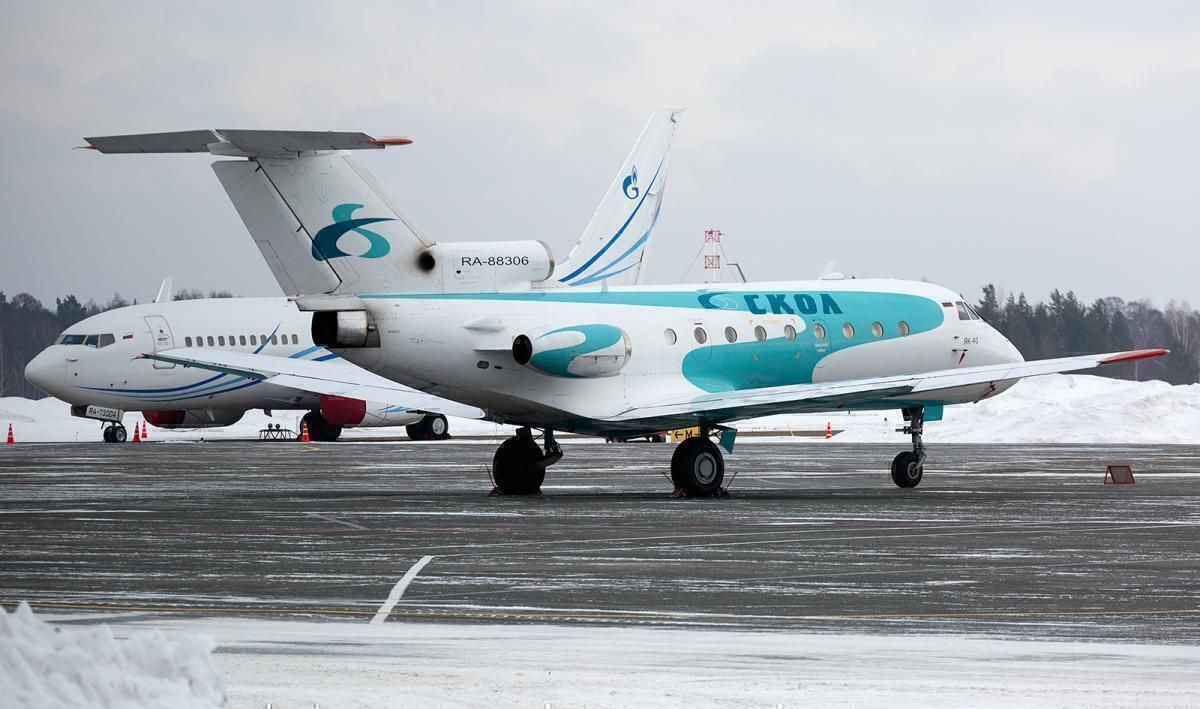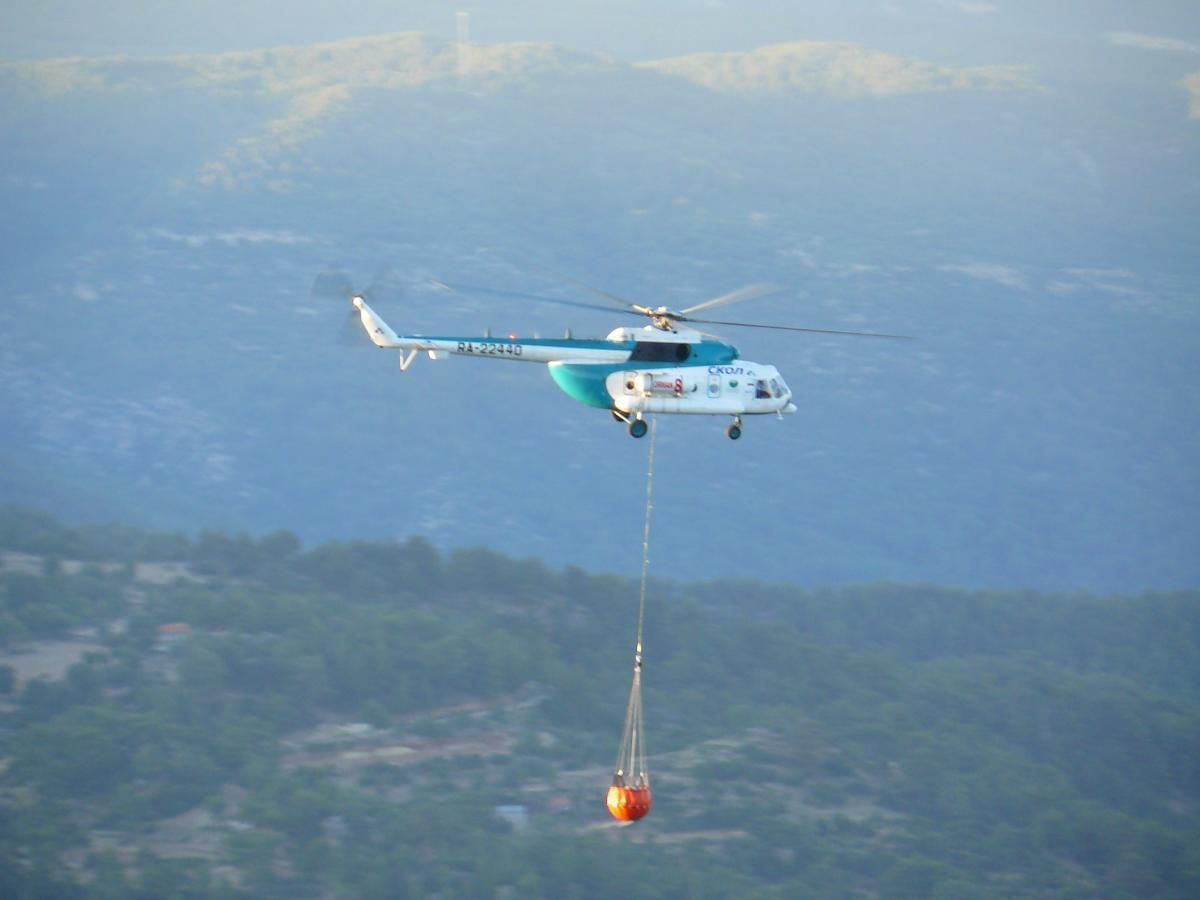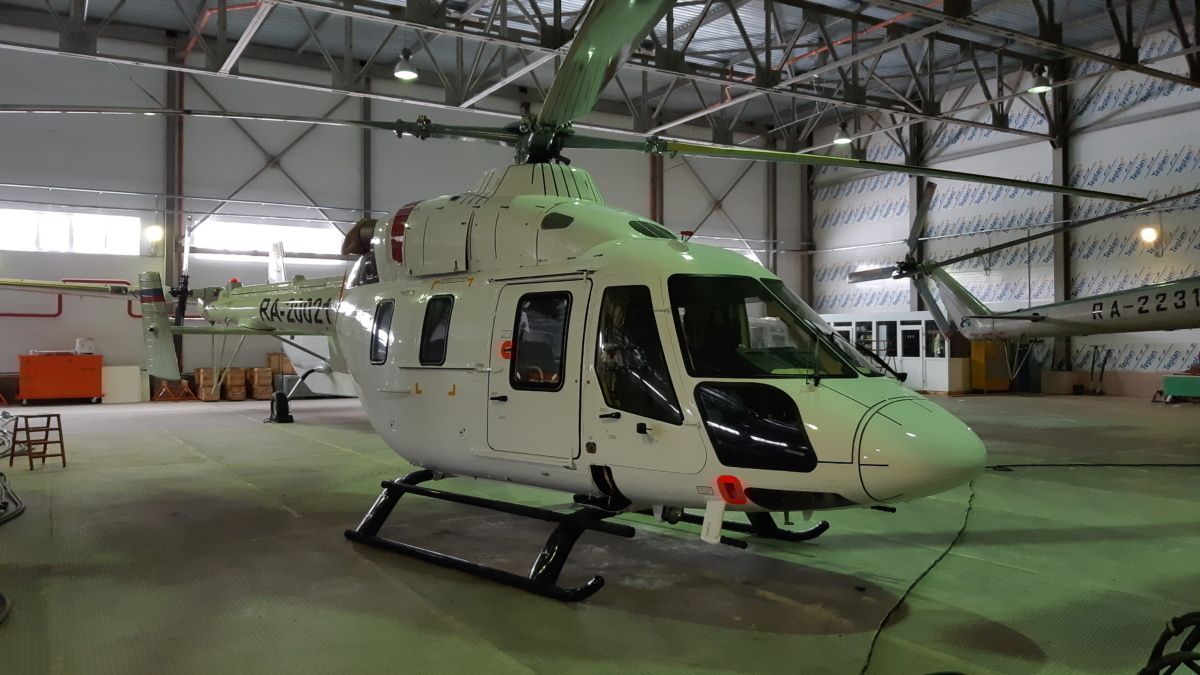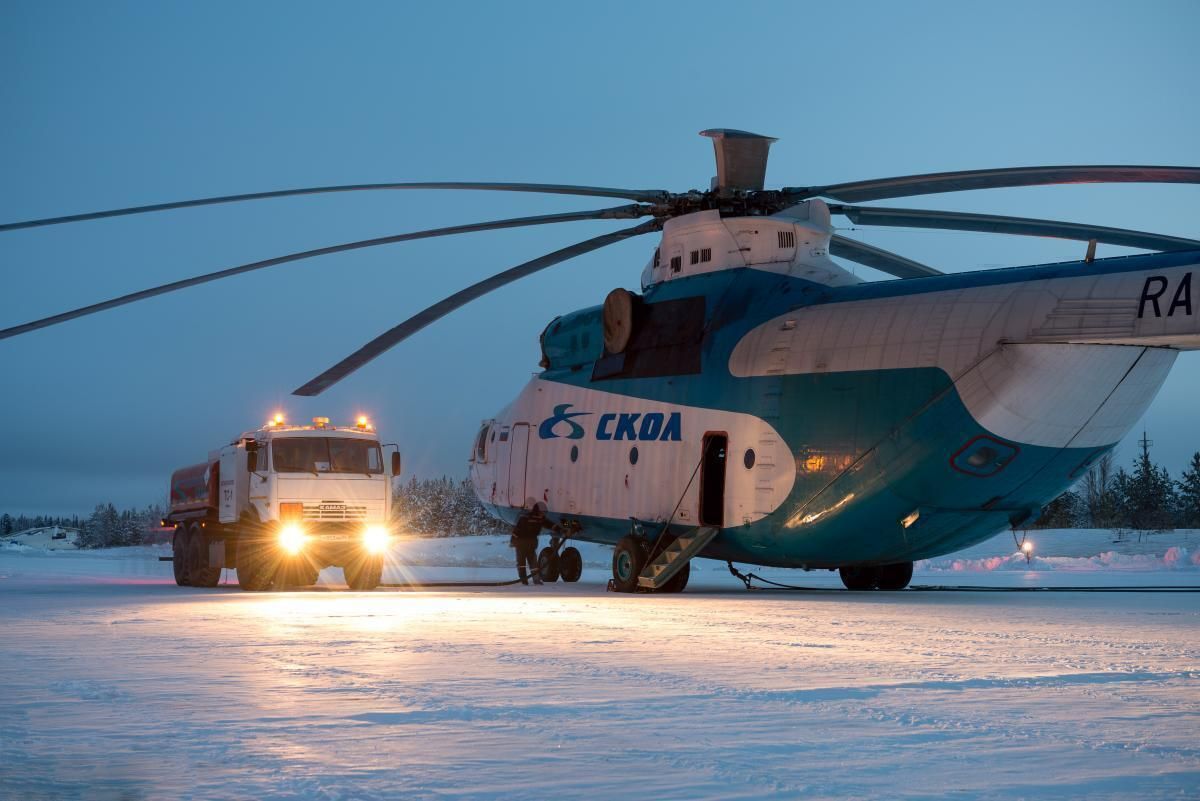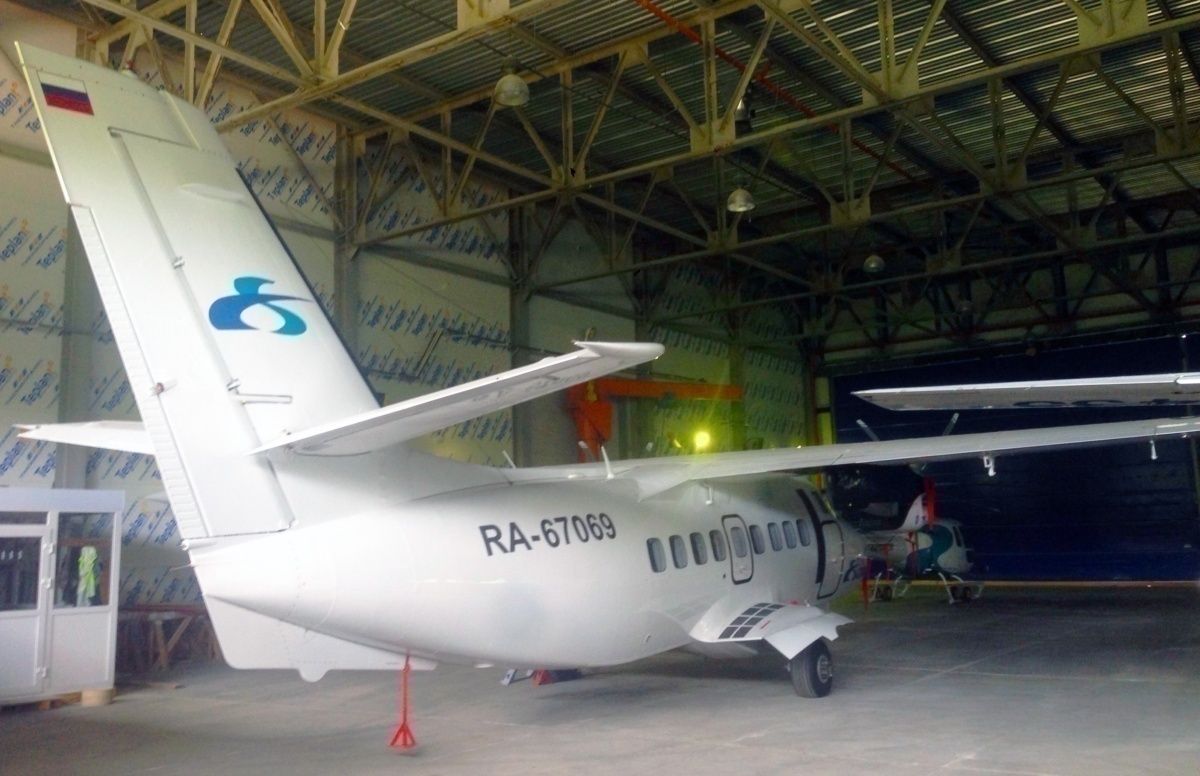While watching some trip reports on YouTube, I came across a Russian airline called Skol and wondered why I had never heard of them. The flight in question was from the Russian Baltic Sea enclave of Kaliningrad to Pskov, a Russian city located about 20 kilometers (12 miles) east of the Estonian border.
Once known as Koenigsberg, when it was Prussia's capital, Kaliningrad was annexed by the Soviet Union after World War II, and its German population was expelled. Bordering the European Union states of Poland and Lithuania, the enclave is cut off from the rest of Russia, making air and sea travel vital.
Skol Airlines started with one Mi-26 helicopter
Skol Airlines were established in 2000 to help service the Russian gas and oil industries in western Siberia. Based at Surgut International Airport (SGC), Skol commenced life with a single Mil-26T heavy helicopter. Called "Halo" by NATO, the Mi-26 is a heavy transport helicopter designed to carry military equipment to remote places after being delivered by military transport aircraft such as the Ilyushin Il-76 or Antonov An-22. The Mi-26 is the largest and most powerful helicopter to enter serial production.
Skol gained recognition in Greece
Working with Surgutneftegas, Gazprom, Transneft, and several Siberian autonomous governments, Skol grew, adding more helicopters to its fleet. Skol Airlines' most significant milestone came in 2007 when severe forest fires ravaged the western and southern Peloponnese in Greece. Fire fighting took on greater importance for Skol and allowed it to expand its air operations to other parts of the globe. Countries where Skol operated included Afghanistan, Congo, Haiti, Libya, Pakistan, the Philippines, and South Sudan.
Skol has 73 aircraft
Today Skol Airlines has evolved into a significant passenger and cargo carrier with a fleet of 73 aircraft, a 23 hectare 230,000 sqm heliport, 100-room on-site hostel, a Mi-8 hangar, a helicopter filling station, and a certified aircraft maintenance base.
Mi-8T
As we mentioned above, Skol's fleet's primary aircraft is the very versatile Mil-8T, a medium twin-turbine helicopter designed by the Soviet Union and now produced in Russia. In Skol's fleet, the Mil-8T is configured as Mil-8T, Mil-AMT, Mil-171, Mil-8 МТВ-1.
- Mi-8T - 9 units
- Mi-8AMT - 24 units
- Mi-171 - 3 units
- Mi-8MTB-1 - 3 units
Airbus H125
Other helicopters include the Airbus H125, a French-built single-engine used in remote areas and at high altitudes, as you can see in the video below.
The Airbus helicopter holds the world altitude record after landing and taking off from Mount Everest.
Ansat
The Kazan Ansat is a Russian light, multi-purpose helicopter that balances traditional and innovative technical solutions. The Ansat can be quickly re-configured by quick-detachable equipment to perform a wide range of tasks.
- Ansat - three units
Mi-26
The Mi-26 is the largest multi-mission cargo helicopter globally and can lift 20 tons inside the fuselage or external load. Skol Airlines uses the Mi-26 for construction, cargo handling, and fire fighting operations.
- Mi-26 - 12 units
DHC-6 Twin Otter
The de Havilland Canada DHC-6 Twin Otter, now sold as the Viking Air DHC-6 Twin Otter, is a fixed-wing twin-turboprop-engined short takeoff and landing multi-purpose light transport plane. Able to operate in out of the way places, the planes tricycle undercarriage can be fitted with wheels, skis, or floats, making it a versatile 19-passenger plane. The Twin Otter is an exceptionally reliable aircraft and the backbone of many small regional airlines.
- DHC-6 Twin Otter - five units
Cessna 208B Grand Caravan
The Cessna 208B Caravan is an American single-engine plane and one of the most reliable and conservative aircraft ever built. Used by Skol Airlines as a short-haul aircraft, it can transport nine passengers or 1,500 kg ( 3306.93 lbs) of cargo up to 2,000 kilometers ( 1,242 miles).
- Cessna 208B Grand Caravan - 3 units
Let L-410 UVP-E
Manufactured in the Czech Republic by Let Kunovice, the L-410 was
designed to operate under harsh conditions and extreme temperatures. The L-410 UVP-E is an unpressurized high-wing commuter aircraft capable of transporting between 17 and 19 passengers 1,430 kilometers (770 nautical miles) while cruising at 170 KIAS. Before Let-Kunovice introduced a simulator in 2013, the aircraft had a terrible safety record. This can be put down to the lack of a simulator and the fact the aircraft operated in remote locations.
Skol flies the L-410 UVP-E from Kaliningrad
Today the L-410 UVP-E is exceptionally safe, and the plane Skol Airlines operates from its base at Kaliningrad International Airport (KDG). Currently, Skol Airlines flies to Pskov three times per week, and if passenger numbers continue to rise, is looking at adding St. Petersburg, Riga, and Minsk to its list of destinations.
- Let-L410 UVP-E - 5 units
Yakovlev Yak-40
The Yakovlev Yak-40 is a small, three-engined jet airliner, the world's first commuter trijet. Originally designed to be a regional passenger jet, the Yak-40 could accommodate between 24 to 27 passengers depending on the seating configuration. Upgraded with a comfortable 9-seat cabin, Skol Airlines uses its Yak-40s as VIP passenger transportation.
Yak-40 - three units
Skol has only had one crash
Since its inception, Skol Airlines has only had one crash. On 21 October 2016, a Skol Mi-8 helicopter with 19 passengers and three crew crashed while flying in poor weather conditions, killing 19 people.
Skol Airlines should do well
What the future holds for Skol Airlines remains to be seen, but with its primary income coming from gas, oil, and mining entities, it should do well. Also, because it only operates internal Russian flights, and from a hub that relies heavily on air transport, it should not be affected harshly by the COVID-19 pandemic. The L-410 UVP-E, the airline, flies from its Kaliningrad base, is an excellent little aircraft, and is a perfect fit for its planned new routes if they should come to fruition.
Have you ever flown on Skol Airlines or worked with their helicopters? If so, we would love to read all about the experience in the comments.

